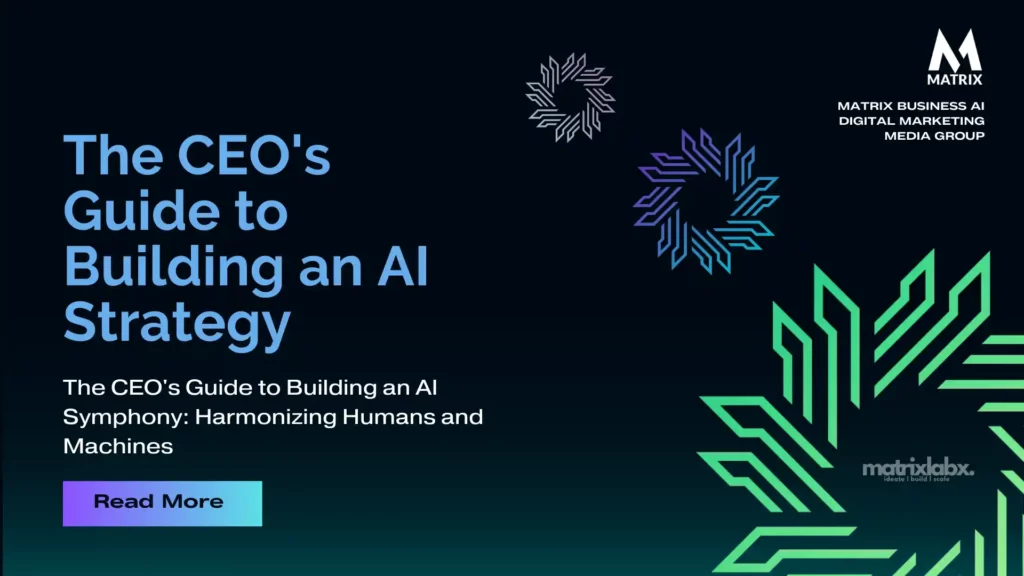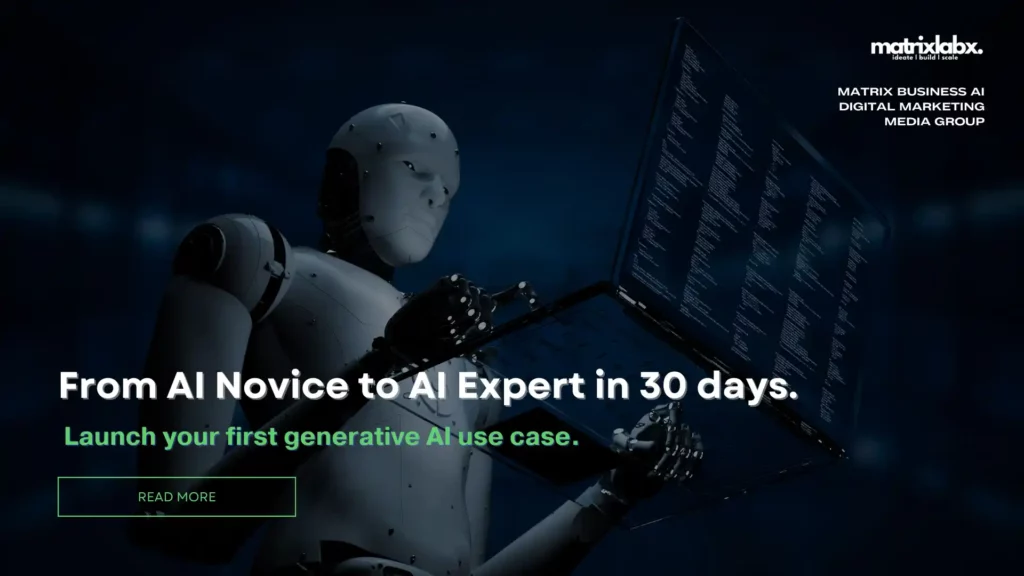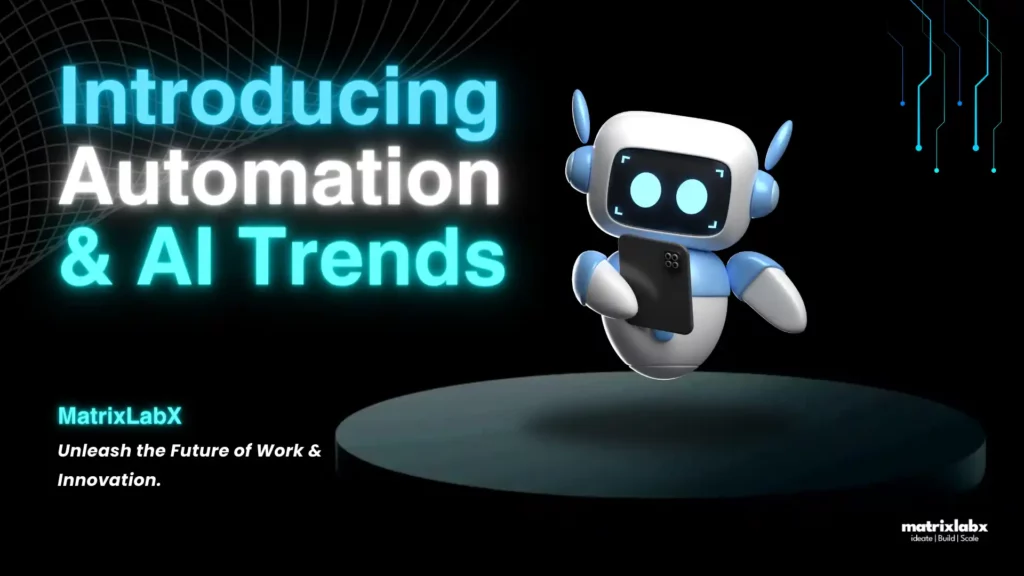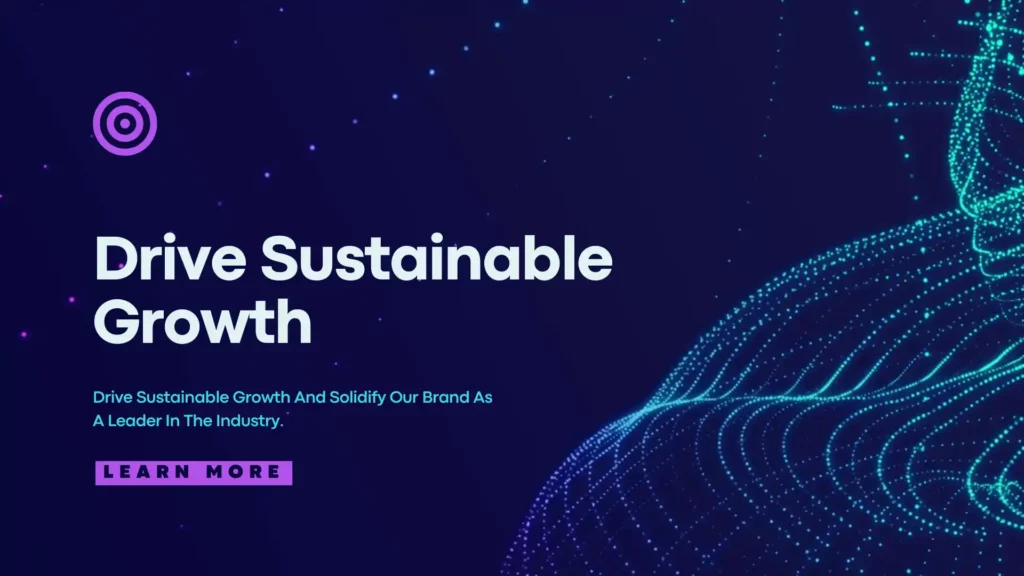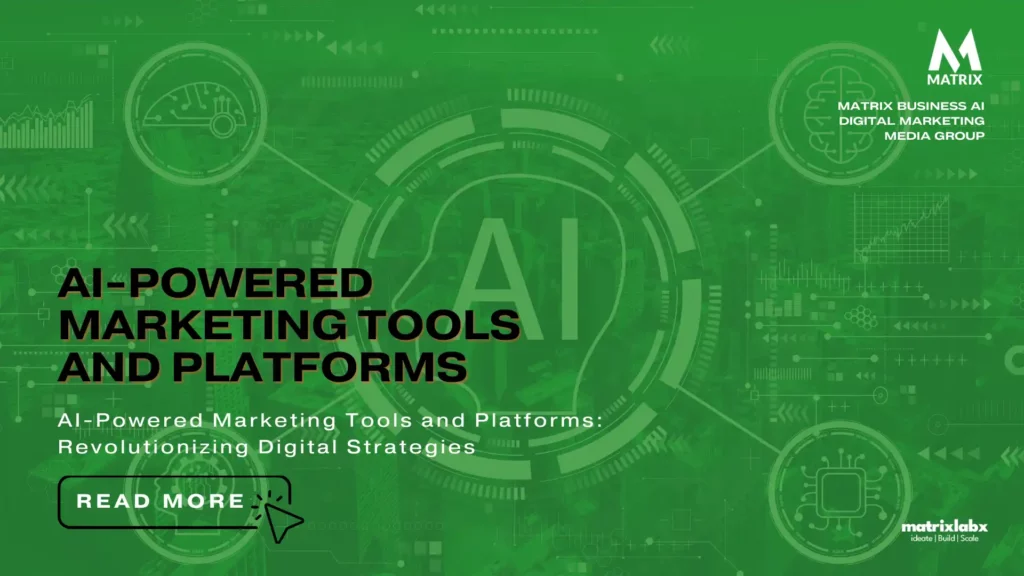The CEO’s Guide to Building an AI Strategy
The CEO’s Guide to Building an AI Strategy.
In an era where Artificial Intelligence (AI) is no longer a futuristic concept but a tangible and rapidly evolving reality, CEOs must navigate the intricacies of integrating this technology into their business models. Understanding and leveraging AI is critical to maintaining a competitive edge in the market.
This guide delves into various aspects of formulating a robust AI strategy, encompassing talent acquisition, reskilling efforts, ethical implications, and fostering an AI-conducive organizational culture.
AI and the Future of Work: Embracing the Inevitable Shift
The advent of AI is redefining the landscape of work. This transformation is about automating tasks and generating new job roles and responsibilities.
Forward-thinking CEOs must anticipate these shifts, ensuring their organizations are prepared for the changes. By aligning AI initiatives with business objectives, companies can harness AI’s potential to boost efficiency, foster innovation, and create unprecedented value.
Reskilling and Upskilling for AI: A Proactive Approach
One of the pivotal challenges in AI integration is the skills gap. Reskilling and upskilling initiatives are essential to prepare the workforce for an AI-driven future.
These programs should focus on developing cognitive flexibility, digital literacy, and problem-solving skills. By investing in employee education, CEOs bridge the skills gap and demonstrate a commitment to their workforce’s long-term growth and adaptability.
AI Precision: Optimize Decisions, Maximize Profits
Ditch guesswork. Embrace certainty. Our data-driven AI solutions deliver surgical insights and measurable results. Contact us today for a custom analysis.
AI Talent Acquisition: Navigating the War for Talent
Attracting and retaining top talent is paramount in the quest for AI integration. This entails identifying individuals with a blend of technical expertise and creative insight.
AI talent acquisition goes beyond traditional hiring processes, requiring innovative approaches like collaborations with academic institutions, competitive compensation models, and offering intellectually stimulating work environments.
AI Talent Acquisition is revolutionizing the recruitment landscape, becoming crucial for several key reasons:
1. Efficiency Revolution:
Imagine sifting through thousands of resumes in seconds! AI-powered tools do just that, automating tedious tasks like keyword matching and initial candidate screening. This frees up recruiters’ time, allowing them to focus on deeper candidate assessment and building relationships. The result? A faster, more streamlined hiring process that saves resources and keeps recruiters from drowning in paperwork.
2. Precision Matching:
Beyond keywords, AI can analyze a candidate’s digital footprint, skills assessments, and writing style to gauge their cultural fit and potential success in the role. This data-driven approach goes beyond traditional resumes, revealing hidden gems that might have been overlooked based on solely formal qualifications. The outcome? A diverse, high-performing team is built for your organization’s specific needs.
3. Bias Buster:
Unconscious biases can creep into any hiring process. AI, however, can analyze candidates objectively, reducing the influence of biases based on factors like gender, name, or alma mater. This fosters a fairer, more inclusive talent pool, attracting a wider range of qualified individuals and creating a more equitable workplace.
4. Talent Magnet:
In today’s competitive market, attracting top talent requires a personalized touch. AI-powered chatbots can engage with candidates, answer questions, and provide feedback throughout the process. This creates a positive candidate experience, fostering a sense of value and trust. Additionally, AI can analyze industry trends and predict future skill needs, allowing companies to proactively build their talent pipeline and stay ahead of the curve.
AI Talent Acquisition is not just a fancy trend; it’s a game-changer that improves efficiency, accuracy, and fairness in the hiring process.
By embracing AI, businesses can attract the best talent, build diverse and effective teams, and ensure long-term success in a rapidly evolving world.
Managing Human-AI Collaboration: Synergizing Strengths
The synergy between human intelligence and AI capabilities can lead to extraordinary outcomes. Effective management of this collaboration involves understanding the strengths and limitations of both entities.
It’s about designing workflows where AI tools augment human skills, leading to increased productivity and more meaningful work for employees.
Harmonizing Humans and Machines: Mastering Human-AI Teamwork in the Digital Age
The digital era ushers in a new era of collaboration, where humans and AI join forces to achieve unprecedented feats. But this potent partnership requires careful orchestration. Here are three key principles to unlock the full potential of Human-AI collaboration:
1. Redefining Roles: Leveraging Synergy, Not Replacing Humans.
AI excels at crunching data and automating repetitive tasks, freeing humans for higher-order thinking. Instead of fearing replacement, humans must become AI co-pilots, providing crucial context, ethics, and creative insights. The focus should shift from competition to complementarity, maximizing the unique strengths of each team member.
2. Building Trust: Transparency and Explainability.
Black-box algorithms breed fear and undermine trust. Human-AI collaborations thrive on transparency. AI decision-making processes must be intelligible, allowing humans to understand the “why” behind the “what.” This fosters trust and empowers humans to provide effective feedback and course correction.
3. Continuous Learning: Embracing a Growth Mindset.
The digital landscape is constantly evolving. Both humans and AI must embrace a growth mindset, continuously learning and adapting. Humans must upskill to effectively partner with AI, while AI systems should be designed to incorporate feedback and refine their outputs. This dynamic learning loop ensures the team remains on the cutting edge, ready to tackle any challenge.
By mastering these principles, we can unleash the true power of human-AI collaboration, propelling organizations and individuals to new heights in the digital age.
Ethical Considerations of AI in the Workplace: Navigating the Moral Maze
Stop Wasting Ads! Get Laser-Targeted Clicks (and Customers) with AI
Tired of ad duds? Get eyeballs on your brand with laser-focused online ads that convert. Click to unleash the power of targeted marketing!
As AI becomes more prevalent in the workplace, ethical considerations must take center stage. CEOs must ensure that AI implementations adhere to fairness, transparency, and respect for privacy.
Establishing ethical guidelines for AI use not only mitigates risks but also builds trust among employees and stakeholders.
AI Training Programs for Employees: Cultivating AI Literacy
Employees across all levels must understand AI technologies to capitalize on AI’s benefits fully. Implementing comprehensive AI training programs is crucial in cultivating a comfortable and proficient workforce with AI tools.
These programs should be tailored to different roles, ensuring relevance and practical application in daily tasks.
Demystifying the Machine: Why AI Literacy Matters in the Digital Age
The digital landscape is morphing with every passing byte, and artificial intelligence (AI) is at the helm of this transformation. It’s no longer just science fiction; AI is embedded in our daily lives, from personalized shopping recommendations to automated customer service chats. Employees across industries, from marketing to finance, must adapt to this evolving landscape. This is where AI literacy training comes in – not as a technical deep dive but as a crucial step towards understanding and effectively collaborating with this powerful technology.
Navigating the Maze: Building an AI-Literate Workforce
Imagine encountering a complex robot on your daily commute. Would you feel comfortable interacting with it without understanding its basic functions? Similarly, navigating the AI-powered workplace requires a fundamental understanding of how these systems work. Training programs can equip employees with this knowledge, demystifying AI jargon, exploring its applications in their specific roles, and fostering a culture of curiosity and innovation around this technology. This empowers employees to utilize AI tools effectively, boosting productivity and problem-solving skills.
Beyond Efficiency: The Ethical Compass of AI
AI literacy goes beyond mere technical know-how. It encompasses understanding the ethical implications of this technology. Training programs can address issues like bias in algorithms, the potential for job displacement, and the importance of human oversight in AI decision-making. This ethical awareness ensures the responsible use of AI tools, fostering trust and transparency within the workforce and creating a future where humans and machines collaborate for the greater good.
By demystifying the machine, navigating the maze of its applications, and equipping employees with an ethical compass, AI literacy training lays the foundation for a thriving digital future. It’s not about replacing humans but about empowering them to work alongside intelligent machines, unlocking new possibilities, and shaping a more efficient, innovative, and responsible digital world.
Building an AI-Friendly Culture: The Keystone of Successful Integration
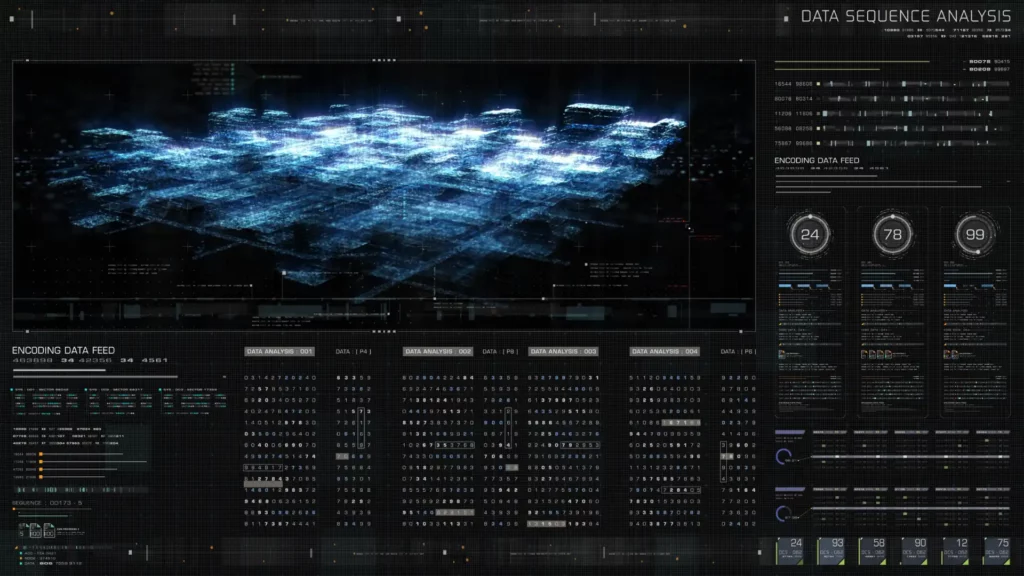
The foundation of a successful AI strategy lies in cultivating an AI-friendly culture within the organization.
This involves creating an environment where experimentation, innovation, and continuous learning are encouraged. A culture that embraces change and technological advancement is crucial for seamless AI integration.
Laying the Foundation: Transparency and Open Communication
Building an AI-friendly culture doesn’t happen overnight. At MatrixLabX, the cornerstone is transparency and open communication.
We prioritize explaining AI’s capabilities and limitations to executives and frontline employees. This fosters trust and understanding, ensuring everyone feels comfortable asking questions and voicing concerns about AI integration.
Regular workshops, demos, and town halls create a platform for open dialogue, breaking down fear and uncertainty around AI.
Empowering Human-AI Collaboration: Upskilling and Reskilling
MatrixLabX recognizes that successful AI integration demands a skilled workforce. We invest heavily in upskilling and reskilling programs.
Employees learn alongside AI, developing the understanding and expertise to collaborate effectively. Data literacy, critical thinking, and problem-solving skills are cultivated, ensuring human judgment complements AI’s analytical power.
This collaborative approach unlocks the true potential of AI, maximizing its efficiency while safeguarding human relevance.
Fostering a Culture of Continuous Learning and Adaptation
The journey towards an AI-friendly culture is continuous. At MatrixLabX, we embrace a growth mindset, encouraging continuous learning and adaptation.
We regularly measure progress, track AI’s impact, and actively seek employee feedback. This feedback loop allows us to identify areas for improvement, refine our AI strategy, and adapt to the evolving landscape of AI technology.
This commitment to constant learning ensures our culture remains resilient and thrives alongside AI, fostering long-term success.
MatrixLabX has built a robust framework for cultivating an AI-friendly culture by establishing transparency, empowering collaboration, and embracing continuous learning.
This foundation is the keystone for successful AI integration, paving the way for a future where humans and AI work together as a cohesive, high-performing team.
Conclusion
Crafting an AI strategy is a complex yet imperative task for CEOs in the digital age. It demands a multifaceted approach, addressing talent acquisition, workforce development, ethical considerations, and cultural transformation.
By embracing these challenges, leaders can steer their organizations toward a future where AI is not just a tool but a catalyst for growth, innovation, and sustained competitive advantage.
In this journey, the role of the CEO is not just to oversee but to inspire, leading the charge in this transformative era. Integrating AI into the workplace is not just a technological upgrade but a strategic imperative that will define the success and relevance of organizations in the years to come.
Stop Wasting Ads! Get Laser-Targeted Clicks (and Customers) with AI
Tired of ad duds? Get eyeballs on your brand with laser-focused online ads that convert. Click to unleash the power of targeted marketing!
